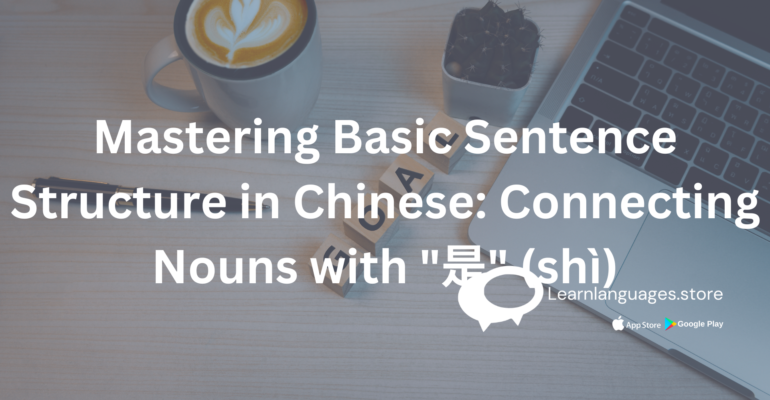Mastering Basic Sentence Structure in Chinese: Connecting Nouns with “是” (shì)
Mastering Basic Sentence Structure in Chinese: Connecting Nouns with “是” (shì)
Estimated reading time: 3 minutes

Introduction: Understanding the fundamental structure of sentences is crucial for mastering any language, including Chinese. In this guide, we’ll explore how to connect nouns using the verb “是” (shì), which is essential for basic sentence formation in Chinese.
Basic Usage of “是” (shì): In its most basic form, “是” (shì) is used to connect two nouns in a sentence. The structure is straightforward:
Structure: Noun 1 + 是 + Noun 2
Examples:
- 我 是 学生。
(Wǒ shì xuésheng.)
I am a student. - 他们 是 有钱 人。
(Tāmen shì yǒuqián rén.)
They are rich people. - 这 是 我 男朋友。
(Zhè shì wǒ nánpéngyou.)
This is my boyfriend.
Other Uses of “是” (shì):
- “是不是” (shì bu shì) for affirmative-negative questions.
- Adding “是吗?” (shì ma?) at the end for tag questions.
Exceptions and Tips:
- “是” (shì) is specifically for connecting nouns; use other structures for linking nouns with adjectives.
- Avoid using “是” (shì) with adjectives; instead, use “很” (hěn) for adjective-noun constructions.
Examples with Pronunciation and Hindi Translation:
- “Are you John?”
- 你 是 John 吗?
(Nǐ shì John ma?)
क्या आप जॉन हैं?
- 你 是 John 吗?
- “They didn’t hear you, right?”
- 他 没 听到,是 不 是?
(Tā méi tīngdào, shì bu shì?)
उन्होंने तुम्हें सुना नहीं, सही है ना?
- 他 没 听到,是 不 是?
- “This is all your money.”
- 这 都 是 你 的 钱。
(Zhè dōu shì nǐ de qián.)
यह सब तुम्हारे पैसे हैं।
- 这 都 是 你 的 钱。
Conclusion: Mastering the use of “是” (shì) for connecting nouns is an essential step in building Chinese sentences. With practice and understanding of the structure, you’ll gain confidence in forming basic sentences and expressing yourself effectively in Chin
ese.
Learn Languages Store
Vashi,
Email: services@learnlanguages.store










